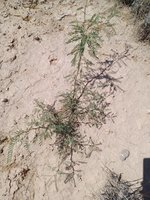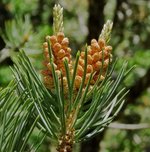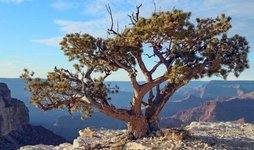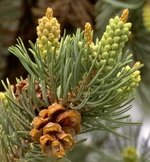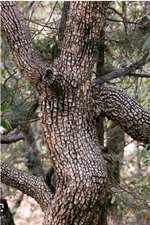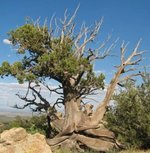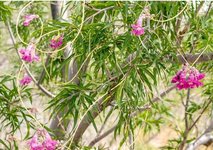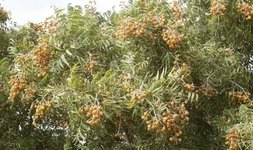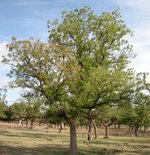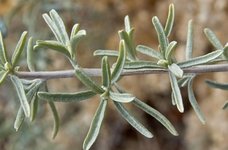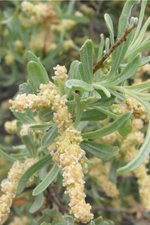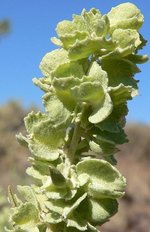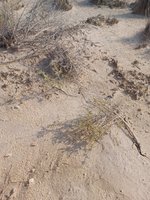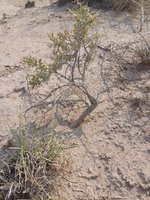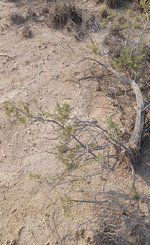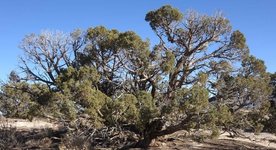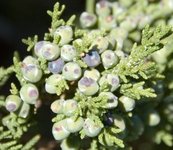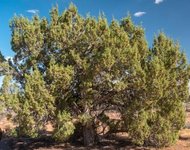Desert O'Piñon
Omono
I have been trying to learn as much as I can about bonsai overall, and I've decided maybe I'm starting off too broadly. So since I'm struggling to find a lot of information or examples of specimens that are native to my area, I will begin this thread in the hope of
1: Creating a resource for others in like climates, created by those living in those areas
2: Learning as much as possible about the species that either thrive, survive, or take a dive.
My experience is primarily what I've (hopefully) learned from the trees I've killed. Mostly that I haven't yet exercised the patience and discipline that this art requires.
I will begin with probably the most plentiful of all, the Mesquite or, specifically in this example, Honey Mesquite - Neltuma (formerly Prosopis) glandulosa, a legume. Very popular as a smoking or cooking wood, it is typically considered more of a scrub or brush on the plains and canyons of the desert, usually having multiple trunks with more lateral growth than apical. It can, however, be trained as a rather imposing individual. Given enough water and pruning, it's 30' canopy provides shade from the scorching sun. Its seed pods are edible, the flowers can be used for tea, or roasted into compressed balls for a sustainable food with a good shelf life.
Being adapted to the desert, they are extremely tough, but there are a few pests to watch for, though none of them should have much effect on a healthy tree. Mealy bugs, armored scale, and a hornworm may sometimes be found chewing on the light green, feathery compound leaves. Brushed beetles are often found sucking sap from the seed pods -- from the inside, where eggs are deposited by the mother.
These may not be ideal candidates for bonsai because they immediately develop a strong tap root that plunges deep in search of water. They are routinely over 100' deep (the longest discovered so far was 190').
Also, I have read and have experience with other legumes that they barely tolerate root work, if at all. Can anyone confirm or refute this? Inquiring minds want to know.
1: Creating a resource for others in like climates, created by those living in those areas
2: Learning as much as possible about the species that either thrive, survive, or take a dive.
My experience is primarily what I've (hopefully) learned from the trees I've killed. Mostly that I haven't yet exercised the patience and discipline that this art requires.
I will begin with probably the most plentiful of all, the Mesquite or, specifically in this example, Honey Mesquite - Neltuma (formerly Prosopis) glandulosa, a legume. Very popular as a smoking or cooking wood, it is typically considered more of a scrub or brush on the plains and canyons of the desert, usually having multiple trunks with more lateral growth than apical. It can, however, be trained as a rather imposing individual. Given enough water and pruning, it's 30' canopy provides shade from the scorching sun. Its seed pods are edible, the flowers can be used for tea, or roasted into compressed balls for a sustainable food with a good shelf life.
Being adapted to the desert, they are extremely tough, but there are a few pests to watch for, though none of them should have much effect on a healthy tree. Mealy bugs, armored scale, and a hornworm may sometimes be found chewing on the light green, feathery compound leaves. Brushed beetles are often found sucking sap from the seed pods -- from the inside, where eggs are deposited by the mother.
These may not be ideal candidates for bonsai because they immediately develop a strong tap root that plunges deep in search of water. They are routinely over 100' deep (the longest discovered so far was 190').
Also, I have read and have experience with other legumes that they barely tolerate root work, if at all. Can anyone confirm or refute this? Inquiring minds want to know.

